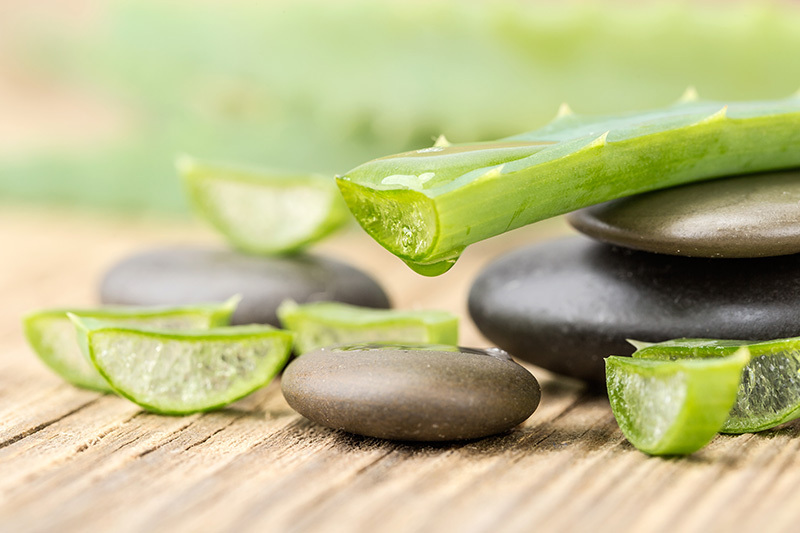8 Eye-Opening Facts About Sunflowers You Probably Didn't Know
Posted on 18/08/2025
8 Eye-Opening Facts About Sunflowers You Probably Didn't Know
Sunflowers have captivated people all over the world with their towering stalks and radiant yellow blooms. But there is much more to these cheerful plants than meets the eye! In this comprehensive article, we delve into eight intriguing facts about sunflowers that highlight their unique biology, cultural importance, and surprising uses. Whether you are a gardening enthusiast, a lover of nature, or simply curious, these revelations will expand your appreciation for these iconic flowers.
1. Sunflowers Track the Sun - But Not How You Might Think
Perhaps the most well-known trait of sunflowers is their apparent "sun chasing." This mesmerizing movement even inspired their scientific name, Helianthus annuus, meaning "sun flower." The phenomenon is called heliotropism, but there's a catch:
- Young sunflowers exhibit heliotropism and follow the sun from east to west during the day, maximizing light absorption for growth.
- As they mature, sunflowers stop tracking the sun and generally face east. This fixed orientation attracts more pollinators, as east-facing blooms warm up faster in the morning.
This intriguing behavior is driven by differential cell growth in the stem, influenced by the plant's internal circadian rhythm. So, while sunflowers track the sun only when young, adults lock in their direction for a practical, reproductive reason.
Key Takeaway:
Mature sunflowers don't follow the sun, but their stationary, eastward gaze plays a vital role in attracting pollinators.

2. Sunflowers Are Native to North America--Not Europe!
Many people associate sunflowers with idyllic European landscapes, but did you know that the original home of sunflowers is North America?
- Indigenous tribes in present-day North and Central America cultivated sunflowers for thousands of years before their introduction to Europe in the 16th century.
- Native Americans used sunflowers as a valued food source, creating flour, oil, and even dyes from the seeds and petals.
After Spanish explorers brought them to Europe, sunflowers quickly gained popularity, especially in Russia, where they became a crucial crop. Today, sunflowers are grown globally, but their deep roots in the Americas are a fascinating part of sunflower history.
Why This Is Surprising
Most people relate sunflowers to Van Gogh and European art, but their story truly begins across the Atlantic.
3. Sunflowers Can Clean Up Toxic Environments
Sunflowers aren't just beautiful--they're also environmental heroes! One lesser-known fact about these golden giants is their application in phytoremediation, the process of using plants to remove toxins from soil and water.
- After the Chernobyl nuclear disaster, scientists planted sunflowers to extract radiation and heavy metals from contaminated soil.
- Similar projects employed sunflowers after problems like the Fukushima disaster in Japan and at other sites polluted by toxic chemicals.
Sunflowers absorb and store heavy metals such as lead, arsenic, and uranium in their tissues through their deep, extensive root systems. This remarkable attribute positions them as a sustainable, natural option for cleaning up hazardous areas--beyond just their garden beauty.
How Does It Work?
The process leverages the sunflower's ability to absorb toxic substances through its roots without harming itself. These pollutants are then sequestered in the leaves and stems, which can be harvested and safely disposed of.
4. The Sunflower Is a Symbol of Hope and Peace
Sunflowers are more than just botanical wonders; they carry profound cultural symbolism worldwide. Often associated with positivity, adoration, and loyalty, they hold special meaning in modern history:
- In 1996, sunflowers were used during a nuclear disarmament ceremony in Ukraine, with leaders planting sunflowers on a former nuclear missile base as a symbol of peace.
- The sunflower movement also became a symbol of student activism and democracy in Taiwan in 2014.
The sunflower's cheerful countenance and radiant petals have made it a universal icon for hope, happiness, and healing across cultures.
Quick Fact:
The sunflower is the national flower of Ukraine, symbolizing the country's wide plains and its enduring spirit.
5. Sunflower Seeds Are Packed with Nutrients and Health Benefits
One of the significant benefits of sunflowers is their seeds. Small but mighty, sunflower seeds are a nutritional powerhouse:
- Rich in healthy fats (especially monounsaturated and polyunsaturated fats), which promote heart health.
- Loaded with vitamin E, an antioxidant that protects cells from damage.
- Provide essential minerals such as selenium, phosphorus, magnesium, and folate.
- Support the immune system due to their zinc content.
Sunflower seeds are enjoyed roasted, raw, or added to salads, granola, and baked goods. Sunflower oil is a healthy alternative in cooking, and sunflower butter is gaining popularity as a nut-free spread.
Why Include Sunflower Seeds in Your Diet?
They're not just delicious but also contribute to lower cholesterol levels, improved skin health, and overall well-being!
6. A Single Sunflower Can Hold Up to 2,000 Seeds
Sunflowers are prolific producers when it comes to seeds. The large, round head of a typical sunflower is actually composed of thousands of tiny individual flowers, called florets.
- Each floret can produce a single seed, and a mature sunflower head can produce up to 2,000 sunflower seeds!
- The seeds grow in a highly organized, spiral pattern--a stunning example of nature's mathematics at work.
This pattern follows the famous Fibonacci sequence, an arrangement that maximizes the efficient packing of seeds and optimizes seed distribution.
Fascinating Mathematical Insight:
The spiral arrangement ensures every seed has ample space to grow, and is just one of many signs of how sunflowers exemplify the natural world's intricate designs.
7. Sunflowers Aren't Always Yellow--Discover Their Dazzling Variety
When people imagine sunflowers, bright yellow petals and dark centers usually come to mind. However, the sunflower family displays a wide range of colors and forms!
- Some varieties showcase vivid red, orange, bronze, or even purple petals. Examples include 'Moulin Rouge' (deep burgundy) and 'Strawberry Blonde' (blush pink and gold).
- Their size can vary dramatically--dwarf varieties grow only 12 inches tall, while record-holding giant sunflowers surpass 15 feet in height.
With their dazzling diversity, including multi-branched plants and double-petaled blooms, sunflowers can fit any garden style or aesthetic.
Gardener's Tip:
Explore new and unusual varieties to add color and interest to your landscape, or even attract a broader range of pollinators.

8. Sunflowers Inspire Science, Art, and Industry
The influence of sunflowers stretches far beyond fields and gardens. They've inspired some of the world's most renowned artists, scientists, and inventors.
- Vincent van Gogh's "Sunflowers" series is one of the most famous works in Western art, symbolizing friendship and optimism.
- Mathematicians study phyllotaxis using sunflowers, which refers to patterns in plant growth and arrangement. The seed arrangement offers a real-world example of the Fibonacci sequence.
- Sunflowers play a key role in sustainable industries, producing biodegradable lubricants, cleaning solutions, and even diesel fuel alternatives.
Their multifaceted impact makes sunflowers one of the most influential and versatile plants in human culture and progress.
Did You Know?
Today, sunflower oil is one of the world's major cooking oils and is valued for its light flavor and high smoke point.
Conclusion: The Enduring Magic of Sunflowers
From their remarkable sun-tracking behavior and environmental uses to their rich cultural symbolism and nutritional benefits, sunflowers are truly extraordinary. These eye-opening facts about sunflowers reveal their importance in nature, history, health, and art. Next time you pass a blooming field of sunflowers or savor a handful of their seeds, remember the complexity and ingenuity within these sunny giants.
- They're more than garden beauties--they're solutions, symbols, and sources of inspiration.
- With their diverse colors and uses, every sunflower tells a story rooted in science and human heritage.
Add a little sunshine to your life by growing, enjoying, or simply admiring sunflowers--and share these fun sunflower facts with friends and family to spread the wonder!
Want to learn more?
Check out our related articles on unique plant facts and practical gardening tips to continue your botanical discovery!
Latest Posts
Top Office Plants That Need Little Attention
8 Eye-Opening Facts About Sunflowers You Probably Didn't Know
Mastering the Art of Hydrangea Care





